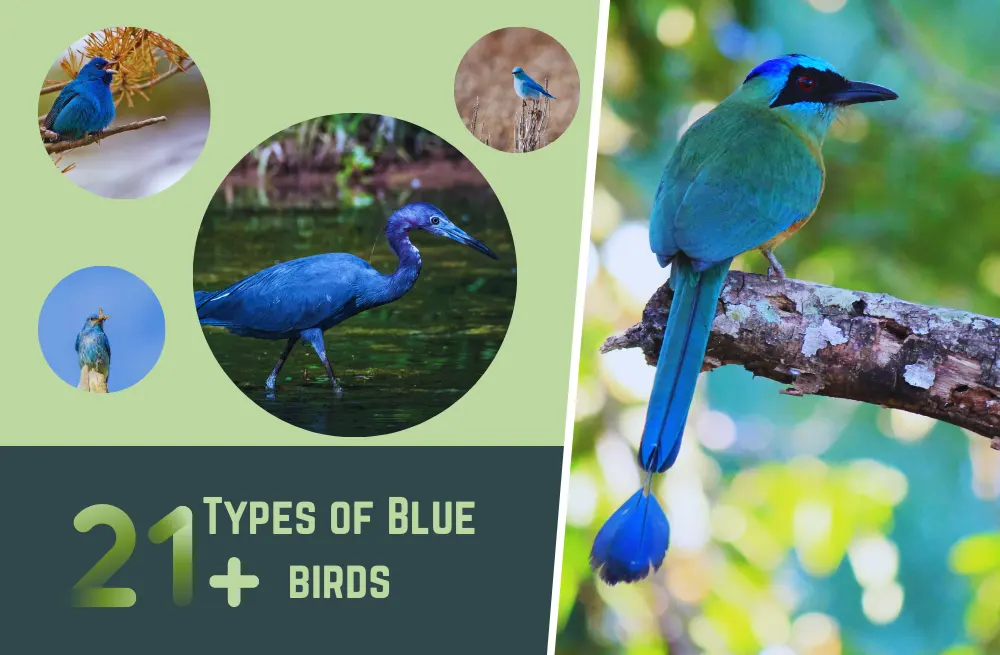45 Amazing Animals That Start With the Letter “B”
Welcome to our captivating collection of 45 animals that start with the letter B! From Beluga Whales to Bonobos and Bandicoots, this list showcases a diverse range of remarkable creatures.
In this list we’ve included animals such as bees, vital for pollination and ecosystem balance. Marvel at the commanding presence of the mighty bison, symbolizing strength and resilience. Discover the intelligent and adaptable nature of baboons, known for their complex social structures.
Dive into the depths to encounter the unique blobfish, often called the “world’s ugliest fish.” Admire the delicate beauty of butterflies as they undergo their mesmerizing transformation. And experience the playful antics and exceptional communication skills of bottlenose dolphins.
This collection provides a glimpse into the fascinating tapestry of life, highlighting the wonders of nature. So, let’s dive in and explore the fascinating world of animals that start with B.
Animals That Start With “B”
01. Baboon (Papio spp.)
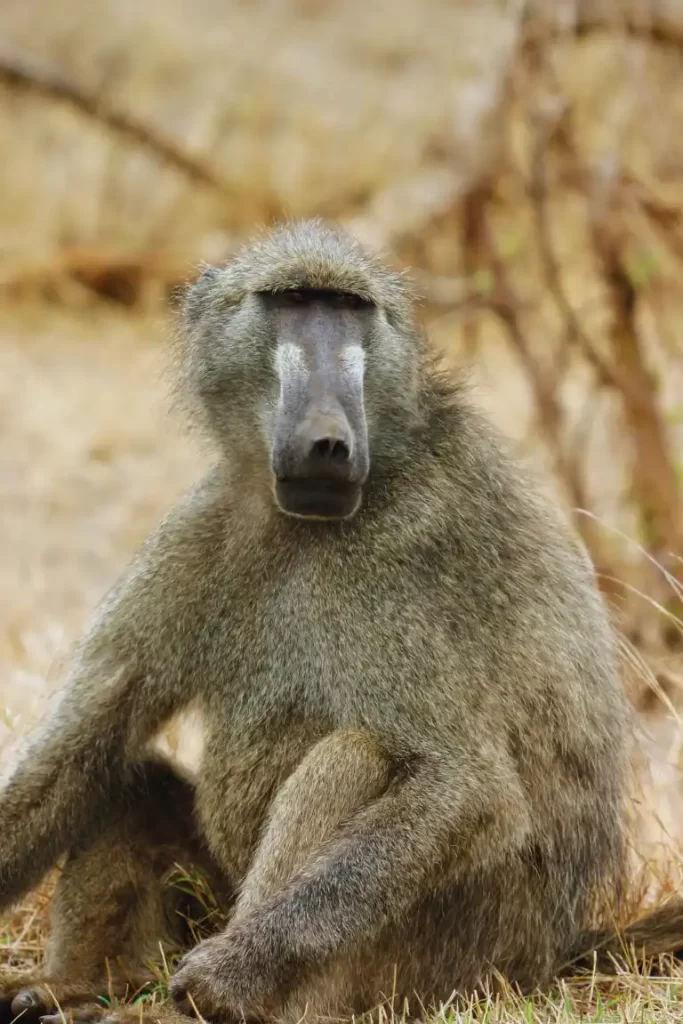
Baboons are highly social and intelligent primates found in various parts of Africa and Arabia. They have long, dog-like snouts and a mane of fur around their faces.
Baboons live in troops, which can consist of several hundred individuals, and they display complex social structures with a dominant hierarchy.
They are adaptable and can be found in a range of habitats, from savannas to forests. Baboons have a diverse diet that includes fruits, seeds, leaves, insects, and even small vertebrates.
02. Badger (Meles meles)
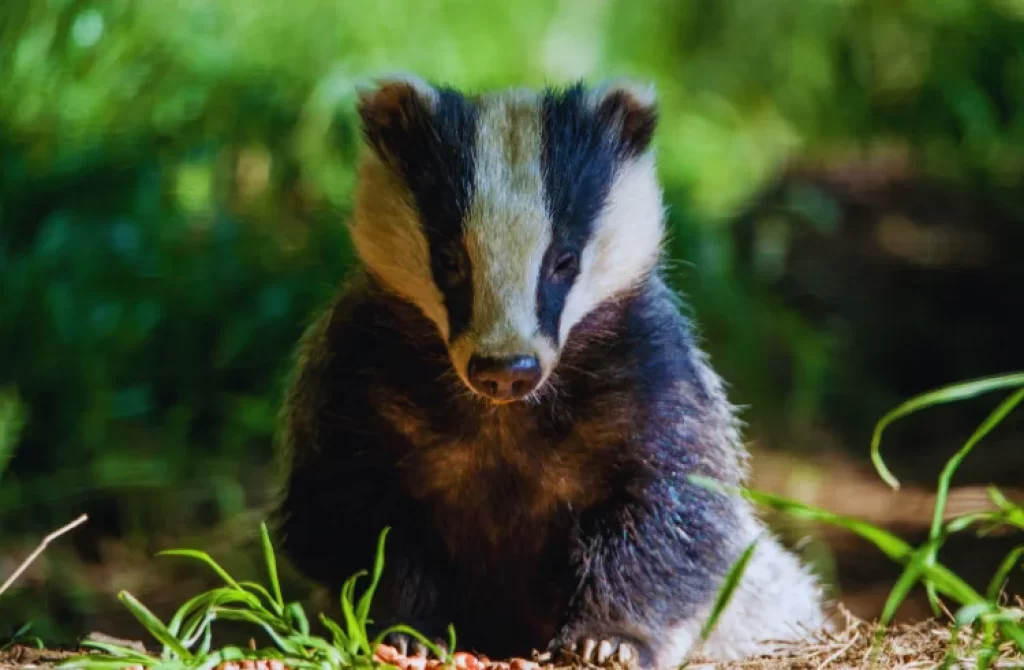
Badgers are small, stocky mammals with a distinctive black and white striped face. They are well-known for their burrowing habits and live in underground setts, which they excavate themselves.
Badgers are primarily nocturnal, and their diet mainly consists of insects, small mammals like rabbits and rodents, fruits, and roots.
They have strong claws for digging and powerful jaws for crushing food. Badgers are solitary animals, except during the breeding season when they form small family groups.
03. Bald Eagle (Haliaeetus leucocephalus)
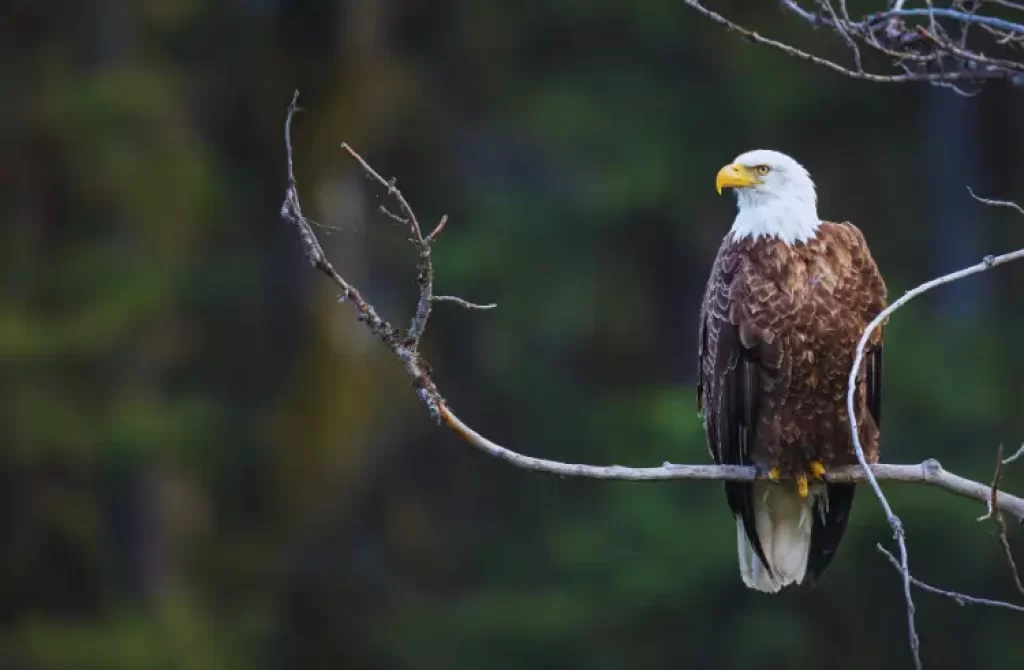
The bald eagle is a majestic bird of prey found in North America. It is known for its striking appearance, with a white head and tail contrasting against a dark brown body. Bald eagles are powerful hunters and excellent fliers, often seen soaring high in the sky.
They have sharp eyesight and can spot prey, such as fish, from great distances. Bald eagles build large nests called eyries, usually in tall trees near bodies of water.
04. Barracuda (Sphyraena spp.)
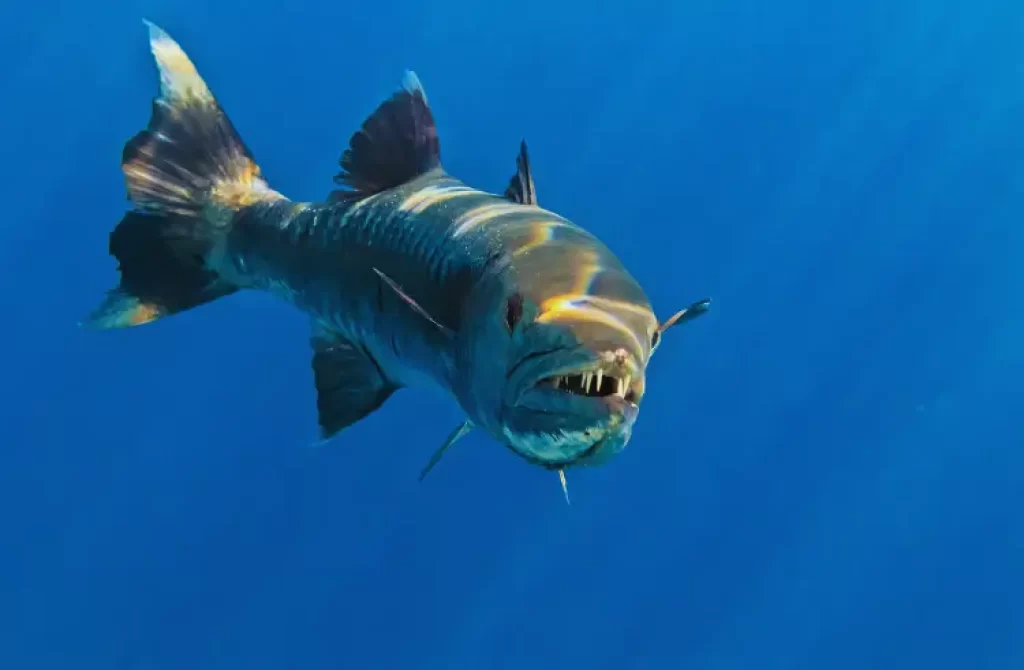
Barracudas are sleek and predatory fish found in warm oceans around the world. They have elongated bodies and sharp teeth, making them formidable hunters. Barracudas are known for their speed and agility, allowing them to ambush their prey with lightning-fast strikes.
They primarily feed on smaller fish but are also opportunistic and may consume crustaceans and squid. Barracudas are popular among sport fishermen due to their size and fighting ability.
05. Basilisk Lizard (Basiliscus spp.)
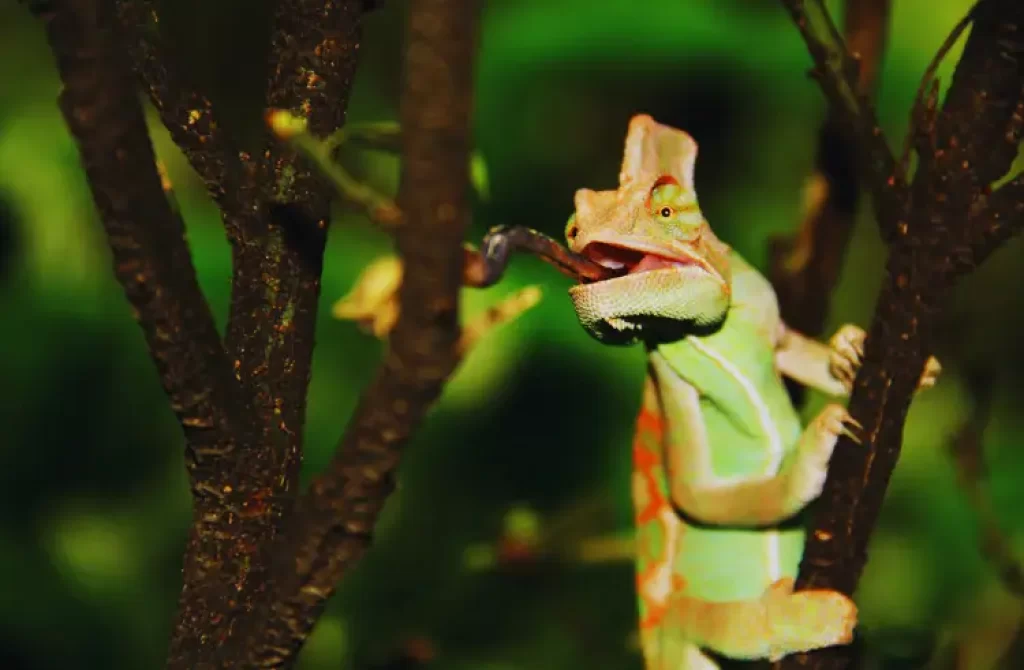
Basilisk lizards, also known as Jesus lizards, are native to Central and South America. They are named after their incredible ability to run on water for short distances.
Basilisk lizards have long toes and fringed scales on their hind legs that create a surface tension, enabling them to move across the water’s surface. They are primarily arboreal and are excellent climbers. Basilisk lizards feed on insects, small invertebrates, and plant matter.
06. Bearded Dragon (Pogona spp.)
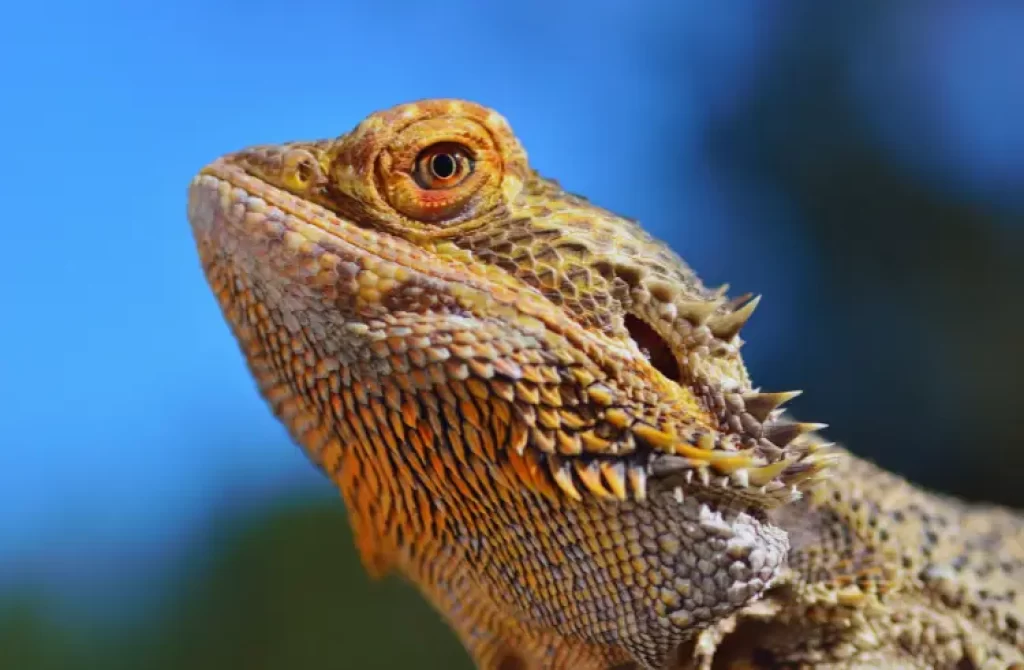
Bearded dragons are popular pet reptiles native to Australia. They are named for the spiny scales under their throats that can puff up and darken, resembling a beard.
Bearded dragons have a broad, triangular head and can change their body temperature by basking in the sun or seeking shade.
They are omnivorous, feeding on a diet of insects, small vertebrates, and vegetation. Bearded dragons are known for their docile nature and unique behaviors, such as arm-waving and head-bobbing.
07. Beaver (Castor canadensis)
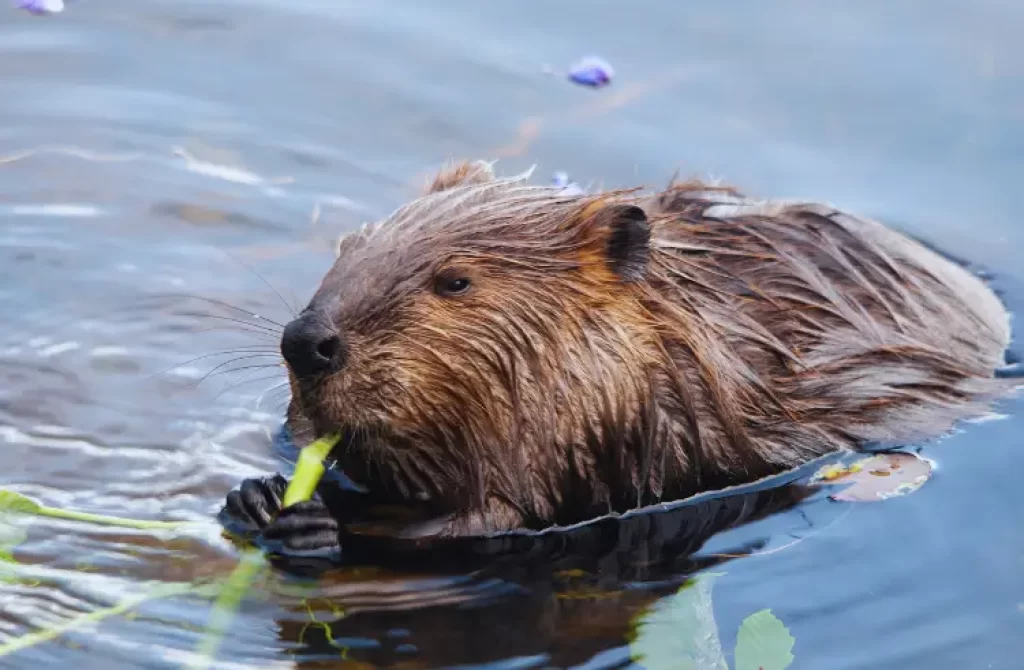
Beavers are large, semiaquatic rodents known for their dam-building abilities. They have a stocky body, webbed hind feet, and a flat, scaly tail, which they use to manipulate and transport materials.
Beavers construct dams to create ponds that provide protection and easy access to food.
They are herbivorous, feeding on bark, twigs, and aquatic vegetation. Beavers are ecosystem engineers, as their dams create habitats for a variety of other species.
08. Bee (Apis spp.)
Bees are flying insects known for their crucial role as pollinators. They are social insects that live in colonies, with a queen, worker bees, and drones. Bees have specialized body parts for collecting pollen and nectar from flowers.
They play a vital role in the reproduction of flowering plants by transferring pollen between flowers, allowing them to produce fruits and seeds. Bees produce honey as a food source, and some species are capable of stinging as a defense mechanism.
09. Beluga Whale (Delphinapterus leucas)
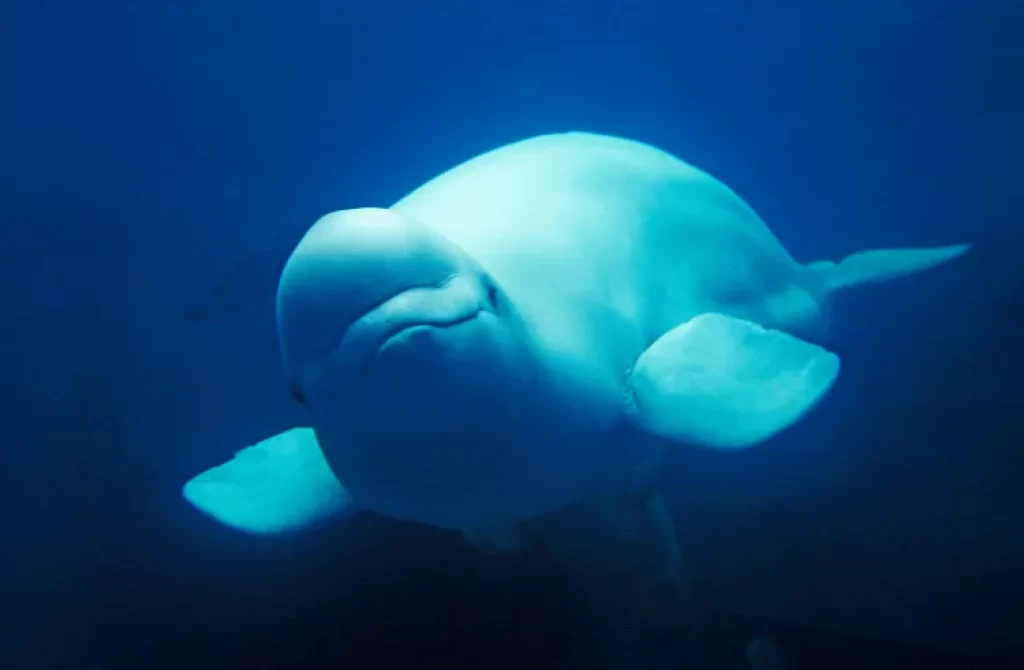
Beluga whales are distinctive white cetaceans found in the Arctic and subarctic waters. They have a rounded head, flexible neck, and a bulbous forehead known as a melon. Belugas are highly vocal and communicate through a complex series of clicks, whistles, and songs.
They are social animals and often travel in pods. Belugas feed on fish, squid, and crustaceans. They are known for their ability to swim backward and for their unique facial expressions.
10. Binturong (Arctictis binturong)
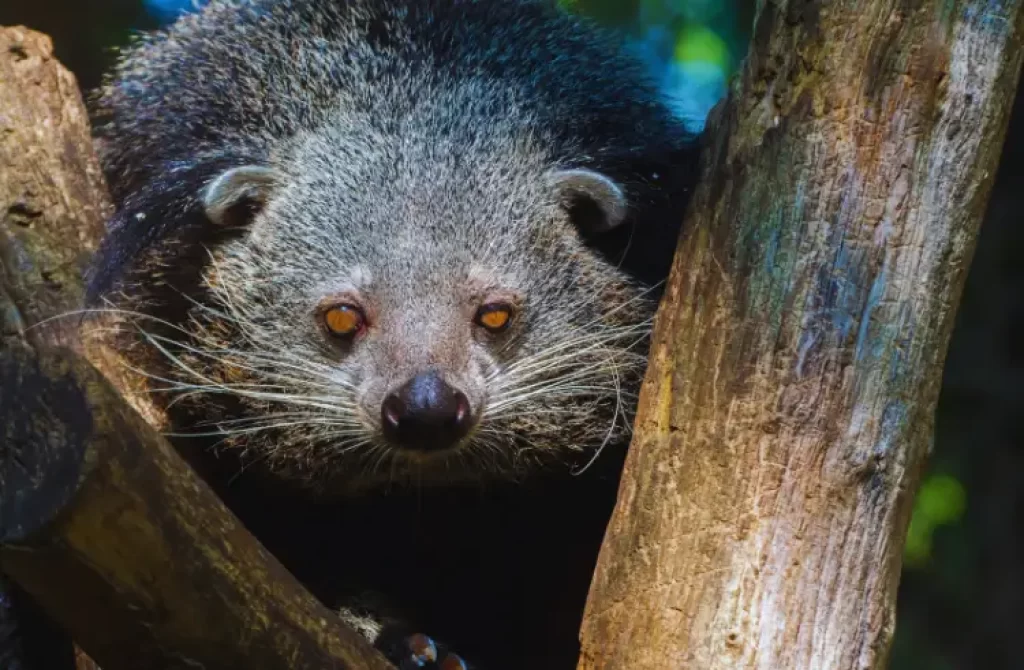
The binturong, also known as the bearcat, is a tree-dwelling mammal found in Southeast Asia. It has a long, prehensile tail, shaggy fur, and a distinctive scent, often compared to the smell of popcorn. Binturongs are excellent climbers and spend most of their time in trees.
They have a primarily omnivorous diet, feeding on fruits, leaves, small mammals, and birds. Binturongs are known for their playful behavior and can emit a variety of vocalizations, including purring sounds.
11. Bactrian Camel (Camelus bactrianus)
The Bactrian camel is a large mammal known for its distinctive hump and ability to endure harsh desert conditions. Native to the steppes of Central Asia, it is well-adapted to extreme temperatures and can survive without water for long periods. Its double-layered coat provides insulation against both cold and heat.
Bactrian camels are highly valued for their strength and are used for transportation and as pack animals in the rugged terrains of their native regions
12. Black Mamba (Dendroaspis polylepis)
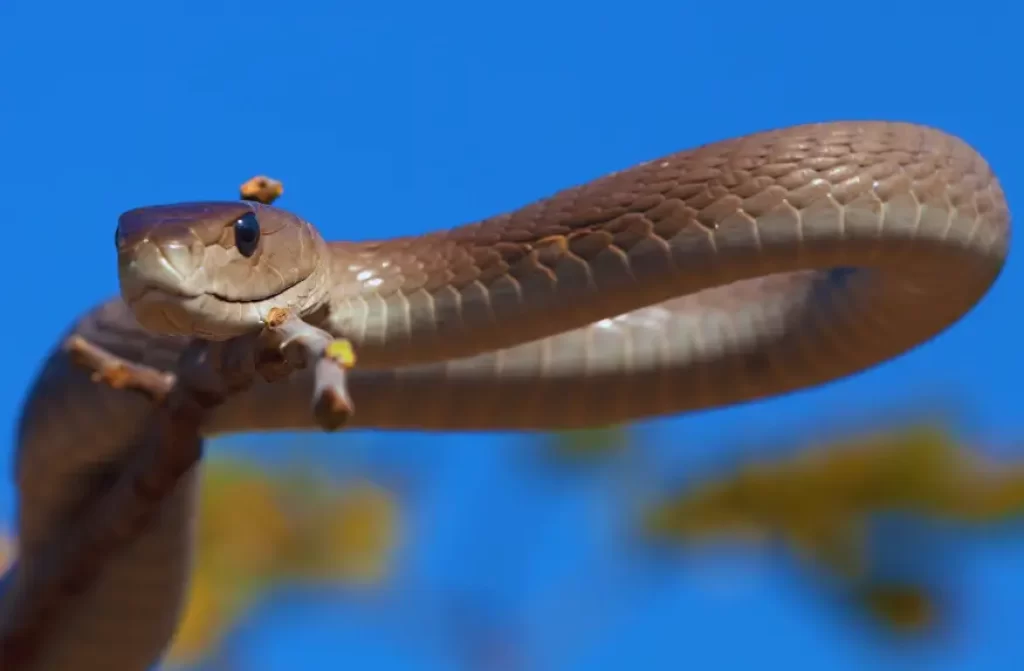
The black mamba is a highly venomous snake found in sub-Saharan Africa. It is known for its speed and agility, capable of slithering at high speeds. The black mamba has a sleek black or dark brown coloration, which gives it its name.
It is one of the world’s longest venomous snakes and has neurotoxic venom that can be fatal to humans. Despite its fearsome reputation, black mambas are generally shy and prefer to avoid confrontation whenever possible.
13. Blue Jay (Cyanocitta cristata)
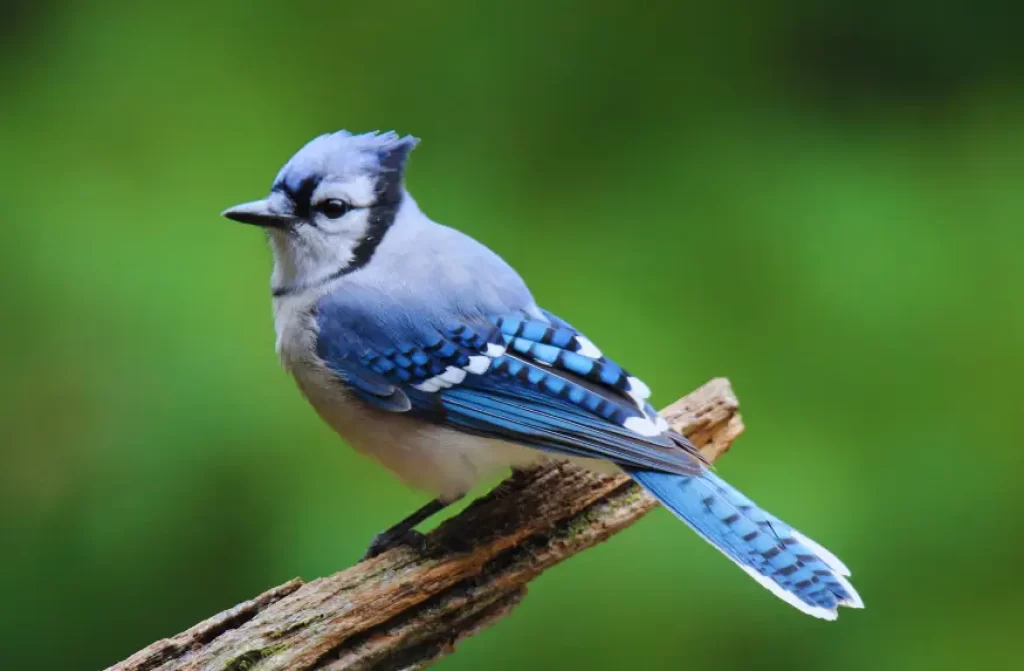
Blue jays are striking and intelligent birds found in North America. They have vibrant blue feathers on their wings and tail, with white and black markings. Blue jays are known for their loud and varied vocalizations, including their distinctive “jay-jay” call.
They are omnivorous, feeding on a diverse diet of nuts, seeds, insects, and small vertebrates. Blue jays are also known to cache food, storing it for future consumption. They are opportunistic and adaptive birds, able to thrive in various habitats.
14. Blue Whale (Balaenoptera musculus)
The blue whale is the largest animal ever known to have existed on Earth. These magnificent marine mammals can reach lengths of over 98 feet and weigh up to 200 tons. Blue whales have a mottled bluish-gray coloration and a streamlined body.
They are filter feeders, consuming massive amounts of krill and small fish by taking in huge mouthfuls of water and then filtering out the prey through baleen plates. Blue whales are found in oceans worldwide and are known for their powerful and hauntingly beautiful songs.
15. Boa Constrictor (Boa constrictor)
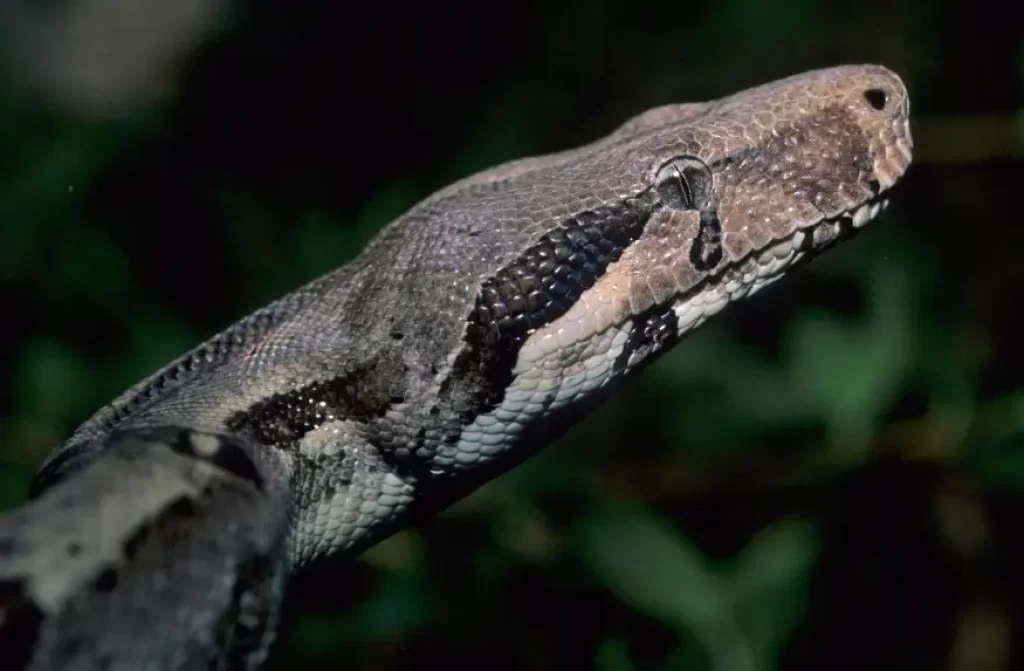
Boa constrictors are large, non-venomous snakes found in tropical regions of Central and South America. They have a muscular body and a patterned appearance, usually consisting of a brown or tan coloration with dark markings.
Boa constrictors are known for their method of hunting and capturing prey by constriction. They ambush their prey, coil around it, and squeeze until the prey suffocates. Boa constrictors feed on a variety of small to medium-sized mammals and birds.
16. Bongo (Tragelaphus eurycerus)
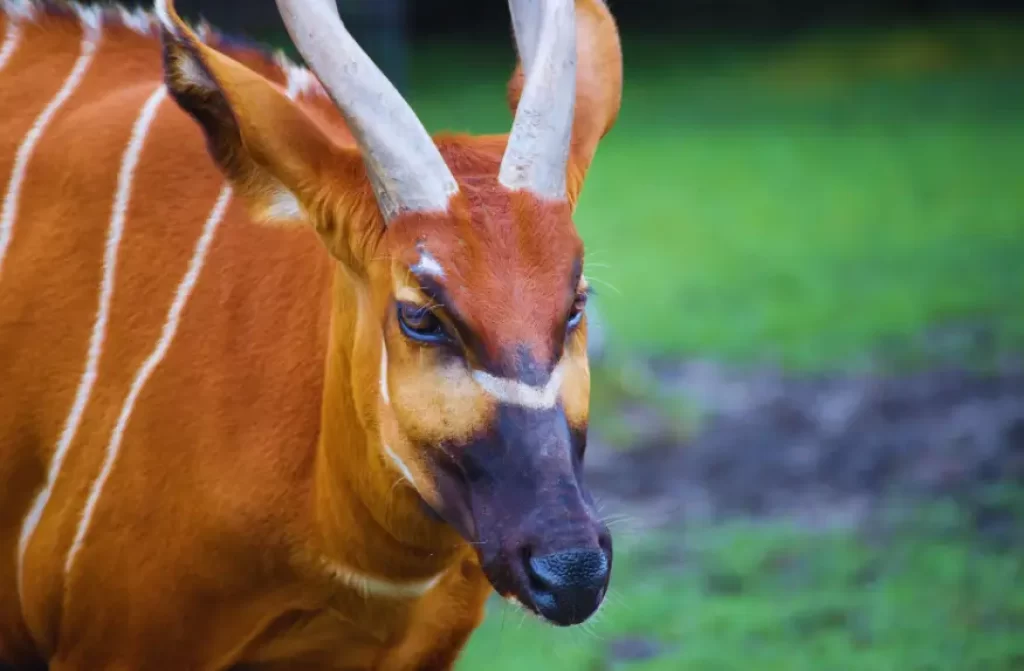
Bongos are large and elusive antelopes found in the rainforests of Central and West Africa. They have a striking appearance, with long and spiraled horns, reddish-brown coats, and white stripes running along their sides. Bongos are primarily browsers, feeding on leaves, shoots, and fruits.
They are solitary animals and are known for their ability to melt into the dense vegetation, making them difficult to spot. Bongos are classified as near-threatened due to habitat loss and poaching.
17. Bottlenose Dolphin (Tursiops truncatus)
Bottlenose dolphins are highly intelligent and social marine mammals found in oceans worldwide. They have a streamlined body, a prominent beak, and a dorsal fin on their backs.
Bottlenose dolphins are known for their playful behavior and acrobatic displays, often riding the bow waves created by boats.
They are carnivorous, feeding on a variety of fish and squid. Bottlenose dolphins use echolocation to navigate and communicate, emitting clicks and whistles that bounce off objects in their environment.
18. Brazilian Wandering Spider (Phoneutria spp.)
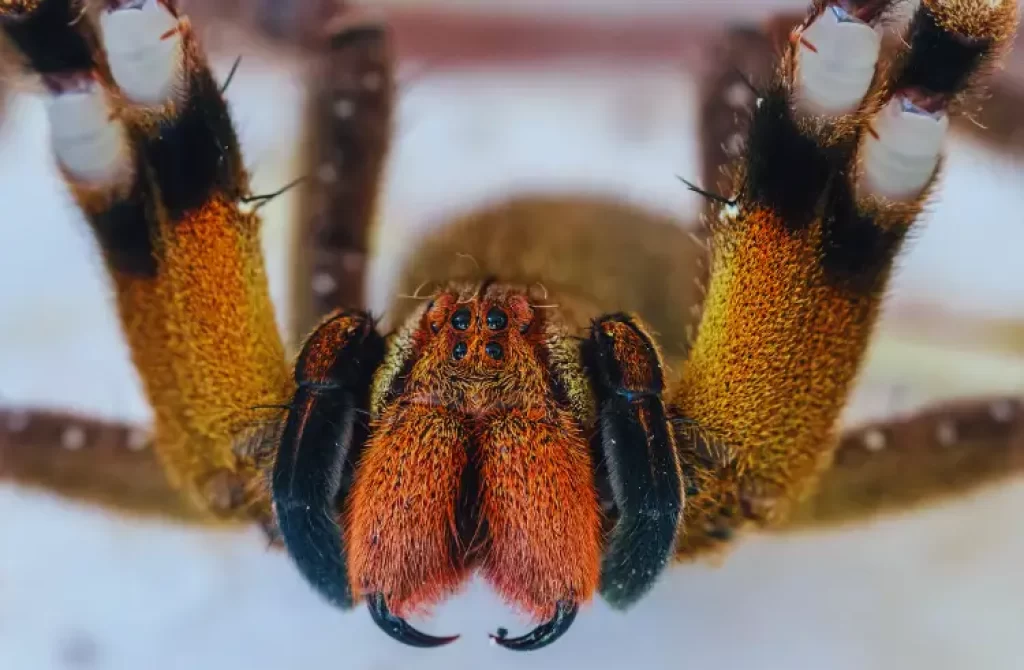
Brazilian wandering spiders, also known as banana spiders, are venomous arachnids found in Central and South America. They are known for their aggressive behavior and potent venom, which can cause severe symptoms.
Brazilian wandering spiders are considered one of the most venomous spiders in the world. They are named “wandering” because they do not build permanent webs and are often found on the ground or in foliage. These spiders are nocturnal hunters and primarily feed on insects.
19. Buffalo (Syncerus caffer)
Buffaloes, also known as African buffalo or Cape buffalo, are large bovids found in sub-Saharan Africa. They have a robust build, with a heavyset body, curved horns, and a thick, dark coat.
Buffaloes live in herds and are known for their strong social bonds and collective defense against predators.
They are herbivorous, feeding on grasses and other vegetation. Buffaloes are considered one of the most dangerous animals in Africa due to their unpredictable behavior and aggression when threatened.
20. Banded Sea Krait (Laticauda colubrina)
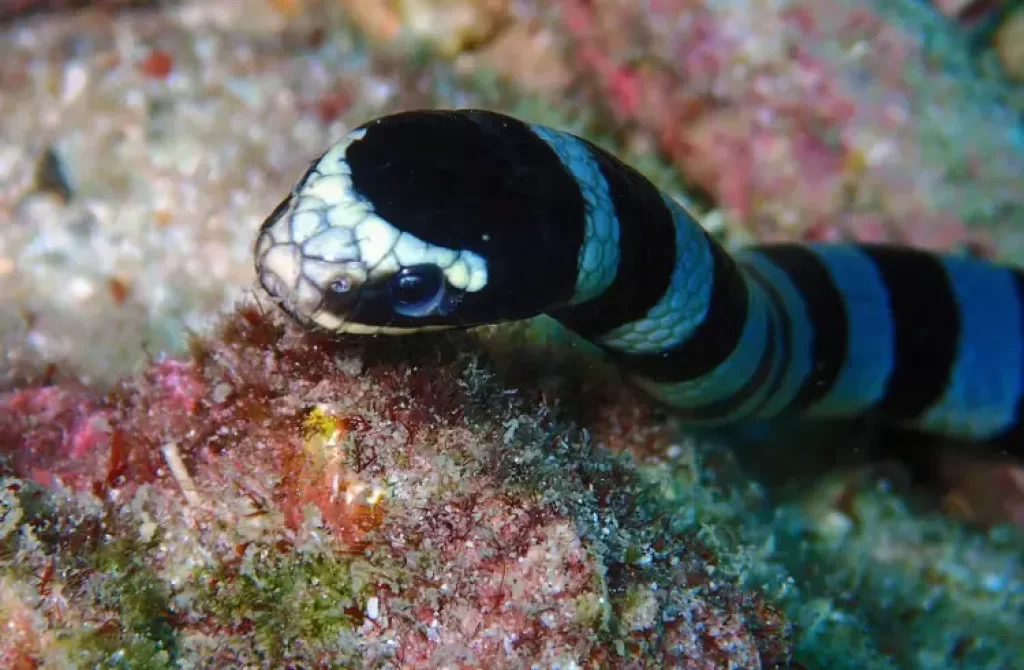
The banded sea krait is a fascinating sea snake found in the tropical waters of the Indo-Pacific region. It has a distinctive appearance with alternating black and yellow bands along its body, providing effective camouflage in its oceanic habitat.
The banded sea krait is highly adapted for life in the water, possessing a flattened tail for efficient swimming and a paddle-like ventral scale on its underside. It is a venomous snake but is generally docile and not aggressive towards humans unless provoked. Banded sea kraits primarily feed on fish and eels, using their venom to immobilize their prey before swallowing it whole.
They are expert divers, capable of remaining underwater for extended periods. Despite their venomous nature, encounters between banded sea kraits and humans are rare, as they are usually found in deep waters and have limited interaction with coastal areas.
21. Butterfly (Order Lepidoptera)
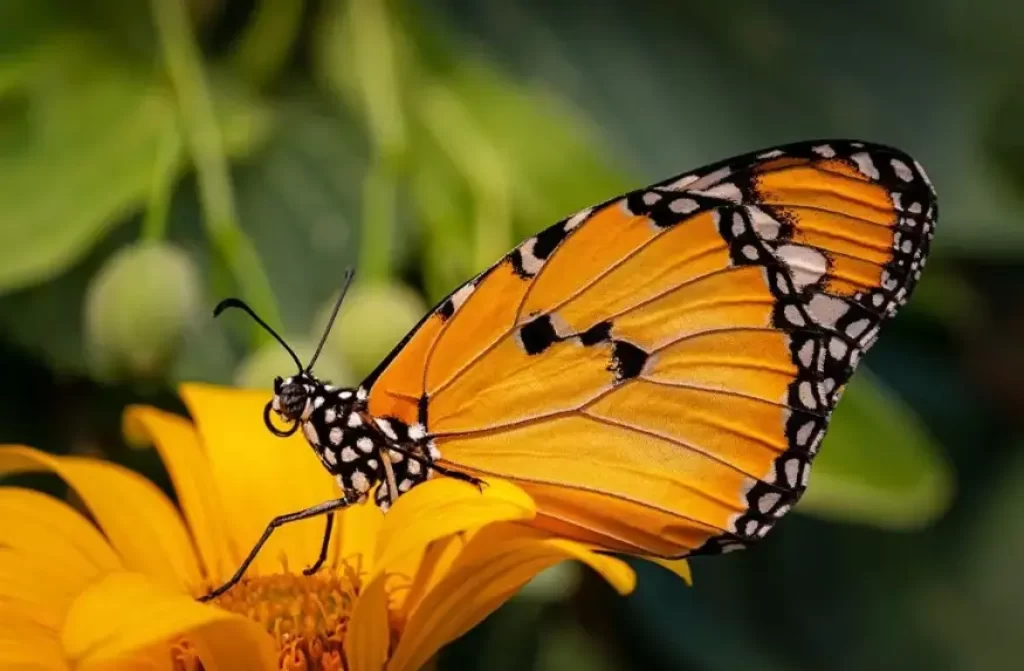
Butterflies are beautiful and delicate insects belonging to the order Lepidoptera. They have colorful wings with intricate patterns and are known for their fluttering flight.
Butterflies undergo a remarkable transformation, starting as caterpillars and then transforming into adults through the process of metamorphosis.
They primarily feed on nectar from flowers, serving as important pollinators. Butterflies exist in a wide variety of species, each with its unique characteristics and habitat preferences.
22. Burmese Python (Python bivittatus)
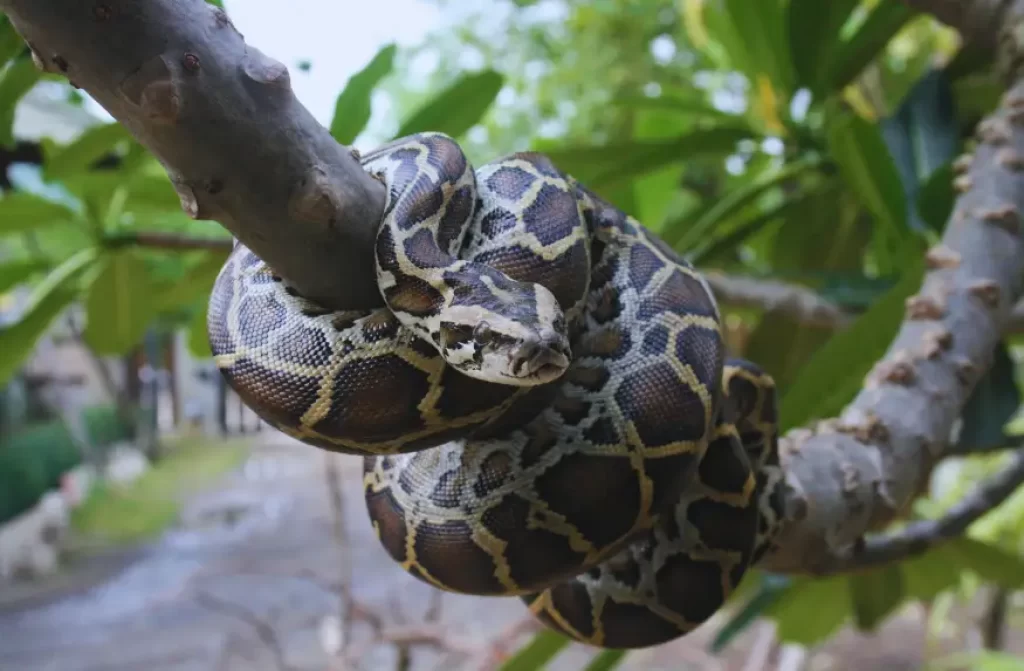
The Burmese python is one of the largest snake species in the world, native to Southeast Asia. They have a robust body and can reach lengths of up to 23 feet. Burmese pythons are known for their striking patterns and are popular in the pet trade.
In the wild, they are skilled ambush predators, feeding on a variety of mammals, birds, and reptiles. However, they are considered an invasive species in some regions where they have been introduced.
23. Black Rhinoceros (Diceros bicornis)
The black rhinoceros is a large and powerful mammal found in Africa. Despite its name, the black rhinoceros can range in color from gray to brown. They have a prehensile upper lip, which they use to grasp leaves and twigs.
Unfortunately, black rhinos are critically endangered due to poaching for their horns, which are highly valued in traditional medicine markets. Conservation efforts are focused on protecting their remaining populations and combatting illegal wildlife trade.
24. Bat-Eared Fox (Otocyon megalotis)
The bat-eared fox is a small mammal known for its distinctive large ears, which resemble those of a bat. These unique ears serve multiple purposes, including enhancing their hearing abilities to detect insects, their primary food source.
Found in the savannas and grasslands of Africa, these foxes have a tan-colored coat with black markings on their face, ears, and tail.
They are highly social animals, living in family groups and communicating through various vocalizations. The bat-eared foxes are primarily nocturnal, using their keen sense of hearing and exceptional night vision to navigate their surroundings. They play a vital role in controlling insect populations, making them valuable members of their ecosystems.
25. Banded Palm Civet (Hemigalus derbyanus)
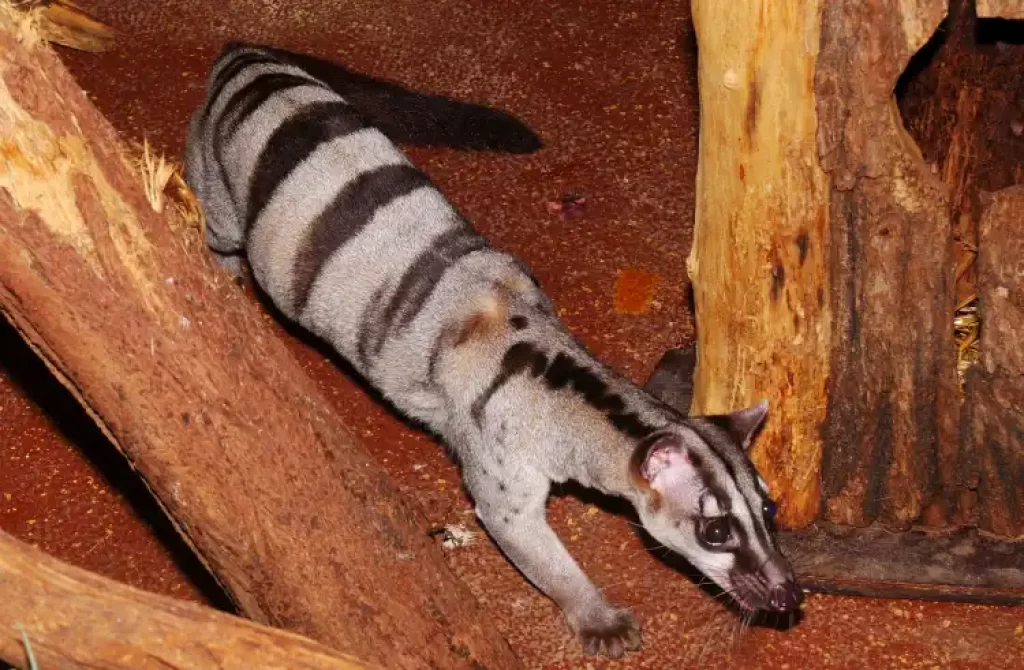
The banded palm civet, also known as the masked palm civet, is a small carnivorous mammal native to Southeast Asia. It is characterized by its distinctive black and white banded fur pattern, which gives it its name. The banded palm civet has a slender body, a pointed snout, and a long, bushy tail. It is primarily arboreal, spending much of its time in trees, where it hunts for food and seeks shelter.
The diet of the banded palm civet consists mainly of fruits, insects, small mammals, and birds. It is a solitary and nocturnal animal, actively foraging during the night. Despite its relatively small size, the banded palm civet has a strong scent gland located near its tail, which it uses to mark its territory.
The species is relatively elusive and not commonly seen in the wild. It faces threats from habitat loss and fragmentation due to deforestation and agricultural expansion. Conservation efforts are essential to ensure the long-term survival of the banded palm civet and its unique role in the ecosystems it inhabits.
26. Blue-footed Booby (Sula nebouxii)
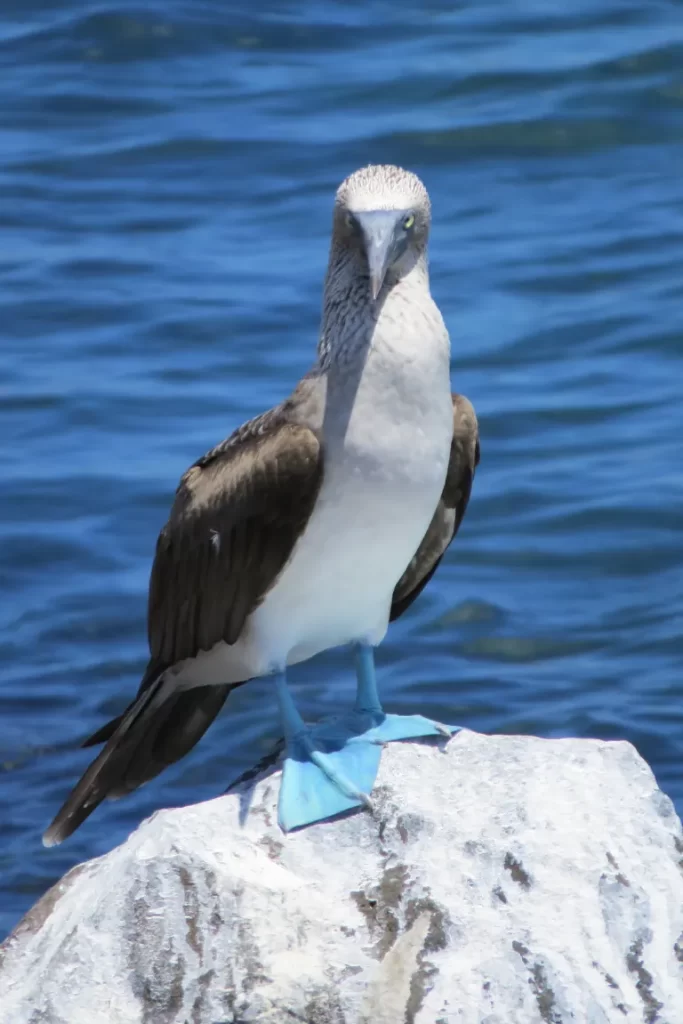
The blue-footed booby is a unique seabird found in the Pacific Ocean, particularly around the Galápagos Islands. It is named for its distinctive bright blue feet, which play a role in courtship displays.
Blue-footed boobies are excellent divers and plunge into the water to catch fish. They are known for their comical mating dances and elaborate courtship rituals. These birds have become an iconic symbol of the Galápagos Islands’ unique wildlife.
27. Badger (Meles meles)
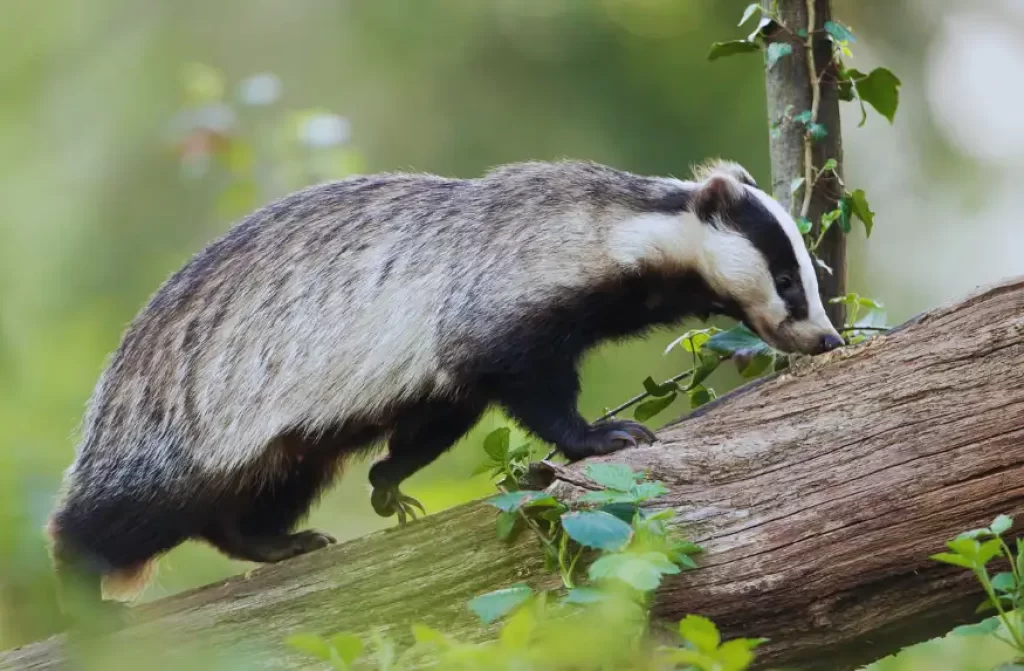
Badgers are stout, short-legged mammals found in Europe, Asia, and North America. They have a characteristic black and white striped face and a compact body.
Badgers are known for their excellent digging skills and live in underground burrows called setts. They are primarily nocturnal and feed on a varied diet, including earthworms, insects, small mammals, and fruits.
Badgers play an important role in controlling rodent populations and are considered important species for ecosystem balance.
28. Bali Starling (Leucopsar rothschildi):
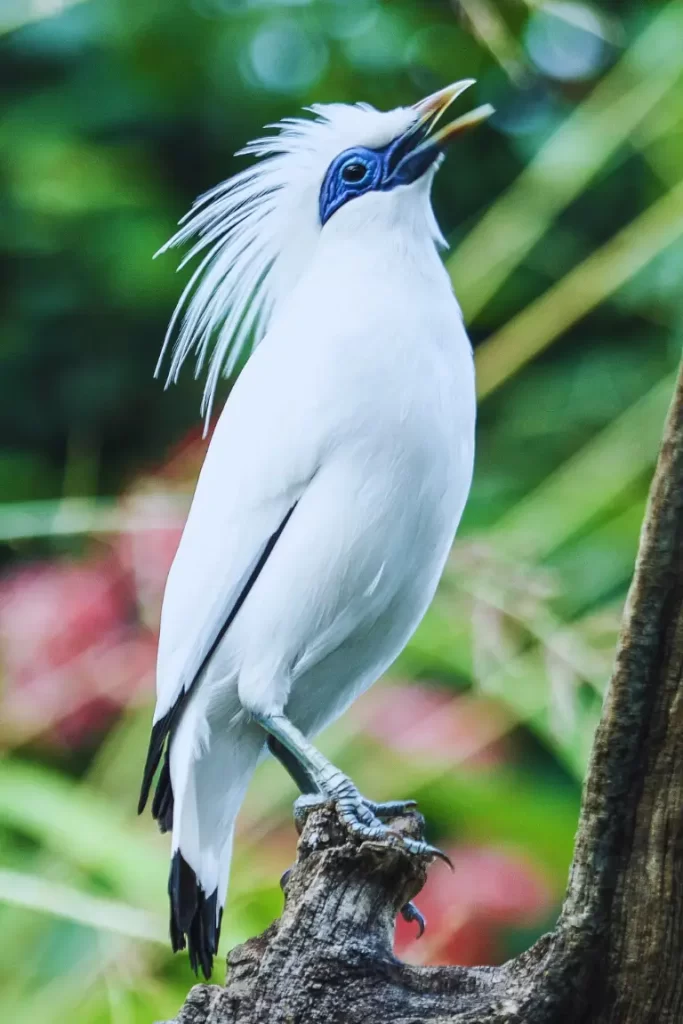
The Bali starling, also known as the Bali myna, is a critically endangered bird endemic to the island of Bali, Indonesia. It is renowned for its striking appearance, with pristine white plumage, a black-tipped crest, and distinctive blue patches around the eyes.
The Bali starling is highly sought after in the illegal pet trade, which has driven its population to the brink of extinction.
29. Barbary macaque (Macaca sylvanus)
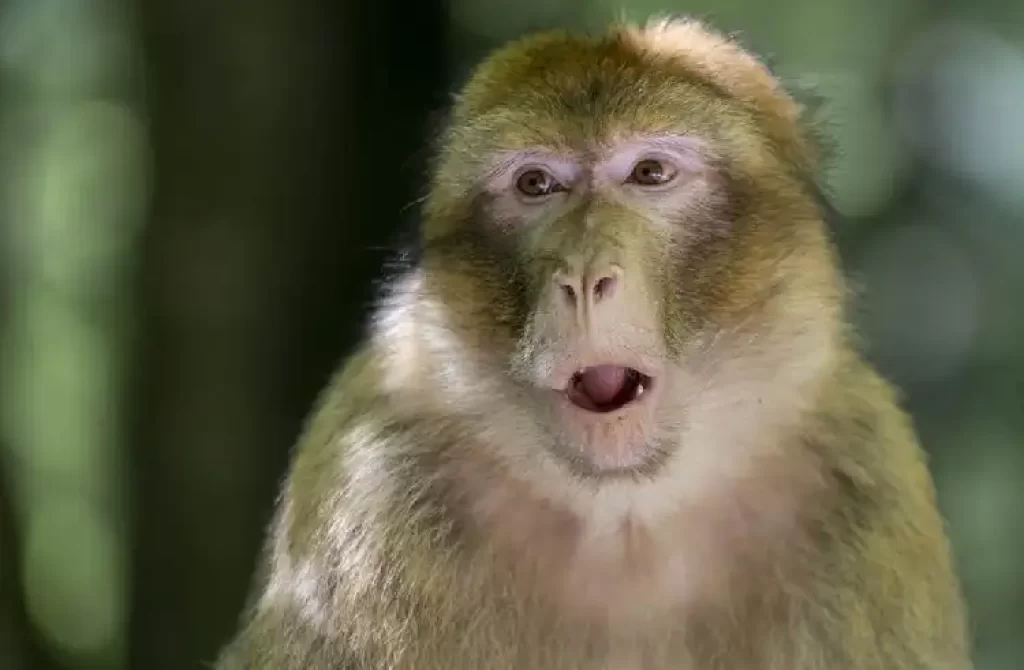
The Barbary macaque, also known as the Barbary ape, is a species of Old World monkey native to the Atlas Mountains of North Africa. It is the only species of macaque that is naturally found outside of Asia.
Barbary macaques are known for their distinctive appearance, with a robust build, a thick fur coat, and a long tail. They have a dark brown or grayish fur coloration, with males being larger and more robust than females.
These primates are highly social animals, living in troops that can range in size from a few individuals to over 100 members. Within the troop, there is a complex social hierarchy, with dominant males leading the group. Barbary macaques are adaptable and can inhabit a variety of habitats, including forests, rocky slopes, and coastal areas.
Their diet primarily consists of fruits, leaves, seeds, and occasionally insects and small vertebrates. They are known for their cheek pouches, which they use to store food for later consumption. Barbary macaques are diurnal animals, being most active during the day and resting or sleeping at night.
30. Blobfish (Psychrolutes marcidus)
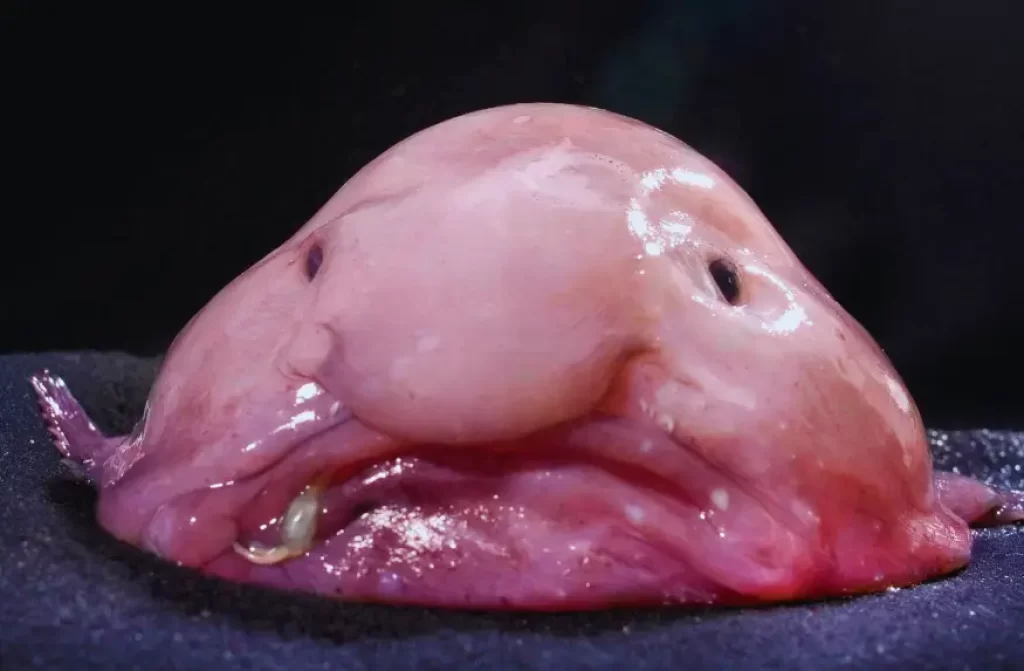
The blobfish is a peculiar deep-sea fish found off the coasts of Australia and Tasmania. It has a gelatinous, blob-like body with a saggy appearance.
Blobfish live at depths of around 2,000 to 3,900 feet where the pressure is high, and their bodies are adapted to these extreme conditions.
While they may look unattractive out of water, blobfish have a unique adaptation that allows them to maintain buoyancy in their natural habitat. They primarily feed on small invertebrates and are considered a vulnerable species due to the impacts of deep-sea fishing.
31. Blue-ringed Octopus (Hapalochlaena)
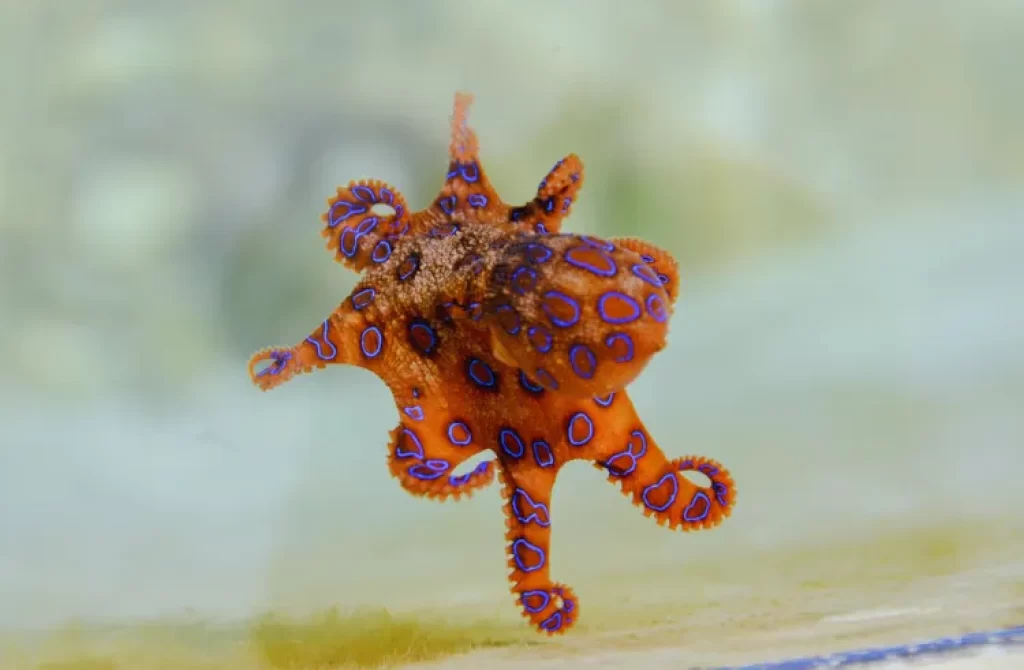
The blue-ringed octopus is a small but highly venomous marine animal found in the Pacific and Indian Oceans. It is known for its vibrant blue rings that appear as a warning when it feels threatened.
Despite its small size, the blue-ringed octopus carries a potent neurotoxin in its venom, which can be deadly to humans. It is a master of camouflage, blending into its surroundings and using its intelligence to hunt for small crustaceans and fish. Encountering a blue-ringed octopus in the wild should be done with extreme caution.
34. Basilisk Lizard (Basiliscus)
The basilisk lizard, also known as the Jesus Christ lizard, is native to Central and South America. It earned its name due to its remarkable ability to run on the surface of water for short distances. Basilisk lizards have long hind limbs and fringed toes that enable them to create a water-repelling effect, allowing them to walk or run on water.
33. Bee Eater (Merops)
Bee eaters are colorful birds found in Africa, Europe, Asia, and Australia. They have long, slender bodies, pointed beaks, and vibrant plumage.
Bee eaters are known for their aerial acrobatics, catching flying insects, especially bees and wasps, mid-flight.
They have a unique hunting technique of catching their prey in mid-air and then beating it against a perch to remove the stingers before consuming it. Bee eaters are social birds, often seen in small flocks.
34. Black-footed Ferret (Mustela nigripes)
The black-footed ferret is a small carnivorous mammal native to North America. It is one of the most endangered mammals in the world. Black-footed ferrets have a slender body, black markings on their feet, and a mask-like pattern on their face.
They are specialized predators of prairie dogs and live in their burrows. Conservation efforts are underway to protect and recover the black-footed ferret population, as they play a crucial role in maintaining the balance of prairie ecosystems.
35. Bandicoot (Perameles)
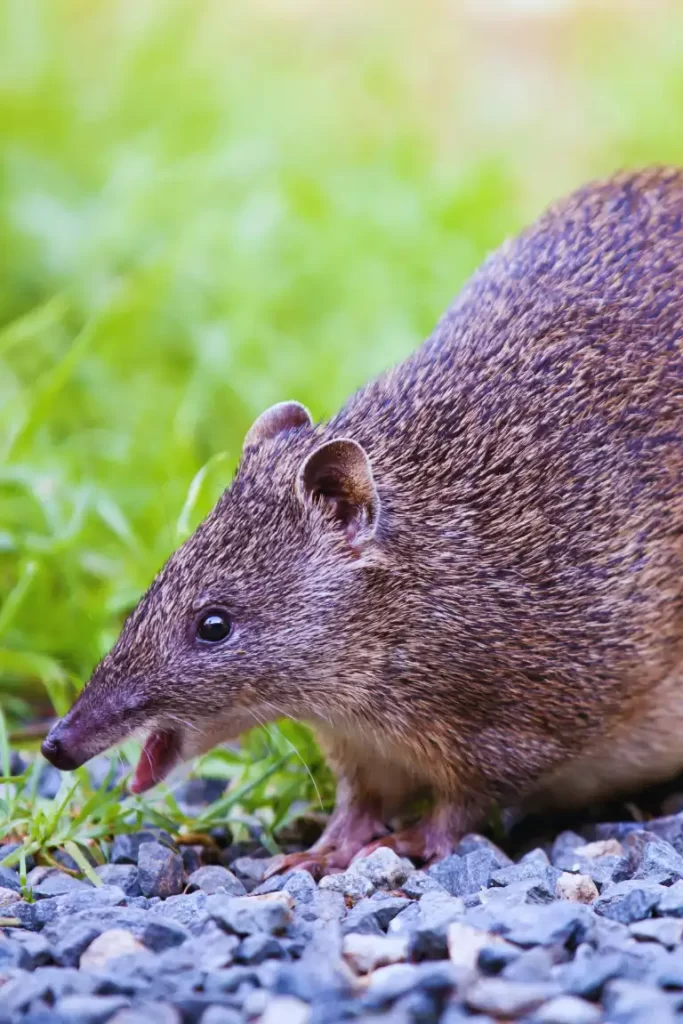
Bandicoots are marsupials native to Australia and surrounding regions. They have a pointy snout, small ears, and a long, slender body. Bandicoots are omnivorous, feeding on a variety of insects, small vertebrates, and plant matter. They play an important role in maintaining the health of the ecosystem by controlling insect populations.
36. Bilby (Macrotis)
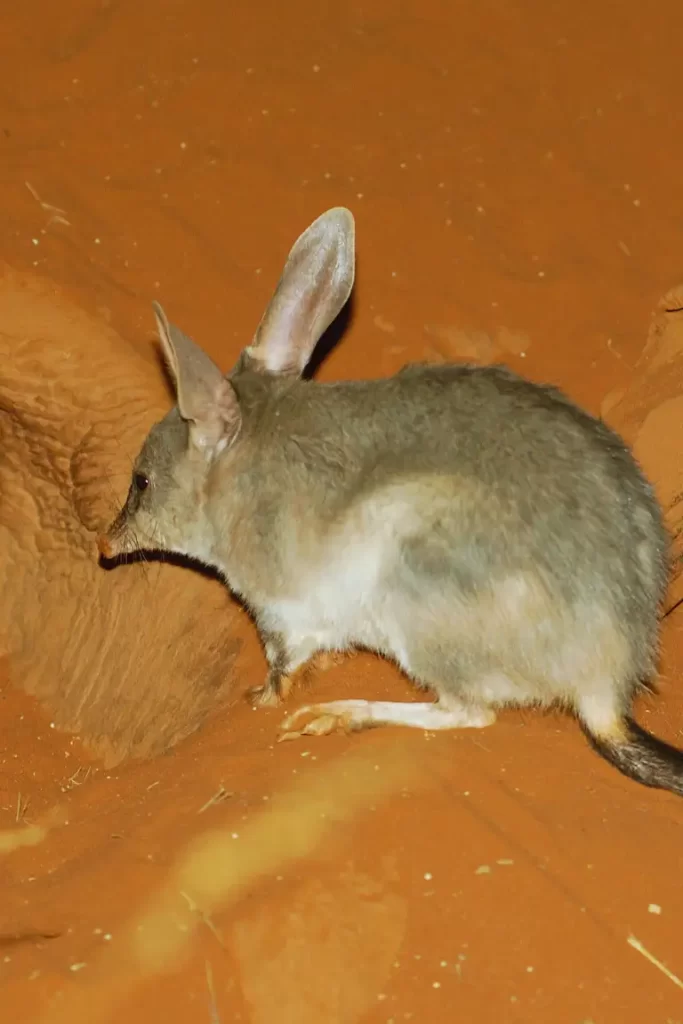
The bilby is a small marsupial native to Australia. It has a long snout, large ears, and a bushy tail. Bilbies are nocturnal and have a diet consisting mainly of insects and plant matter. They are excellent diggers and create complex burrow systems for shelter and protection
37. Booby (Sula)
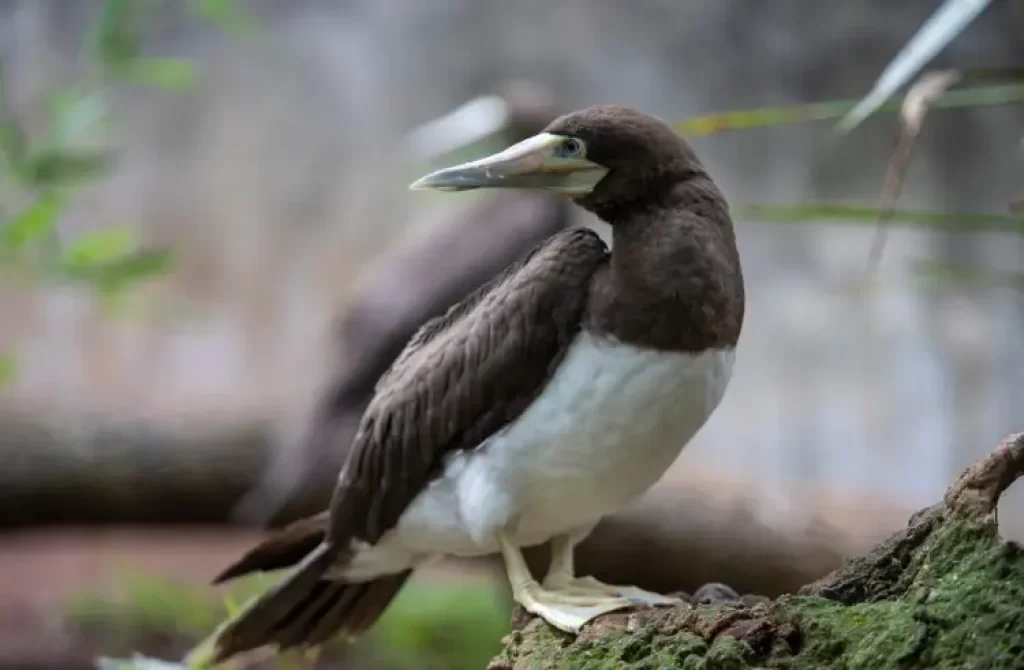
Boobies are a group of seabirds found in tropical and subtropical regions worldwide. They have long, pointed wings, webbed feet, and a streamlined body that enables them to dive and swim with agility.
Boobies are known for their spectacular plunge-diving technique, where they dive from great heights into the water to catch fish.
They have excellent eyesight and can spot prey from above the surface. Boobies feed mainly on fish, but they may also consume squid and other marine organisms. They often breed in large colonies, nesting on the ground or on cliffs.
38. Brook Trout (Salvelinus fontinalis)
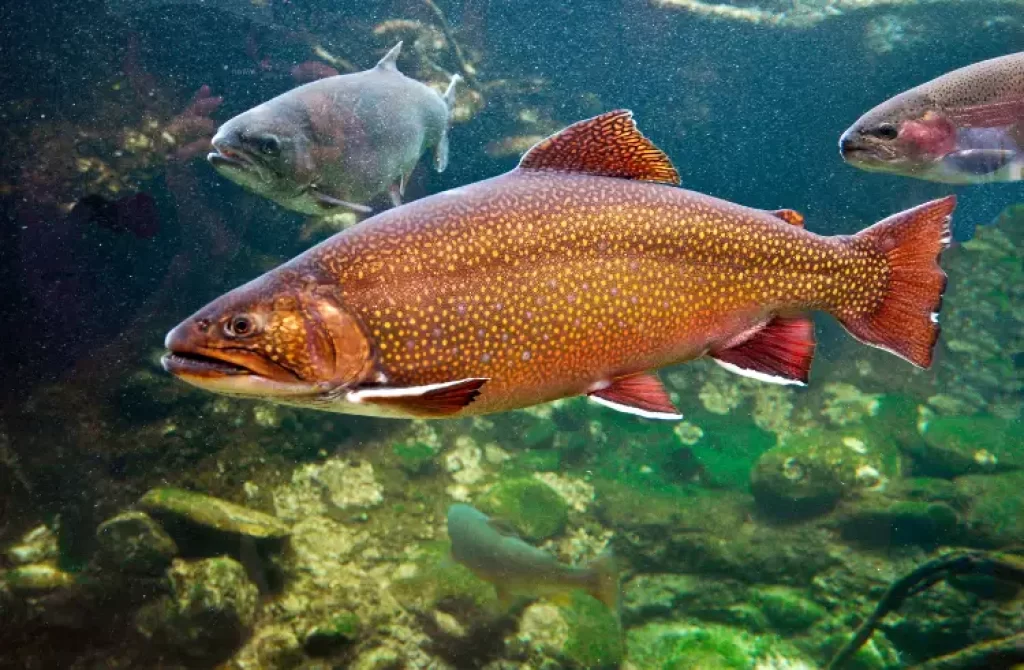
Brook trout, also known as brookies, are a species of freshwater fish native to eastern North America. They are highly valued by anglers for their beauty and spirited fighting ability.
Brook trout have a dark green or brownish body adorned with vibrant red spots and light blue halos, along with white leading edges on their fins.
They inhabit clear, cool streams and lakes, preferring well-oxygenated waters. Their diet primarily consists of insects, crustaceans, small fish, and occasionally small mammals. Brook trout are an important indicator species for the health of their aquatic habitats.
39. Brush Turkey (Alectura lathami)
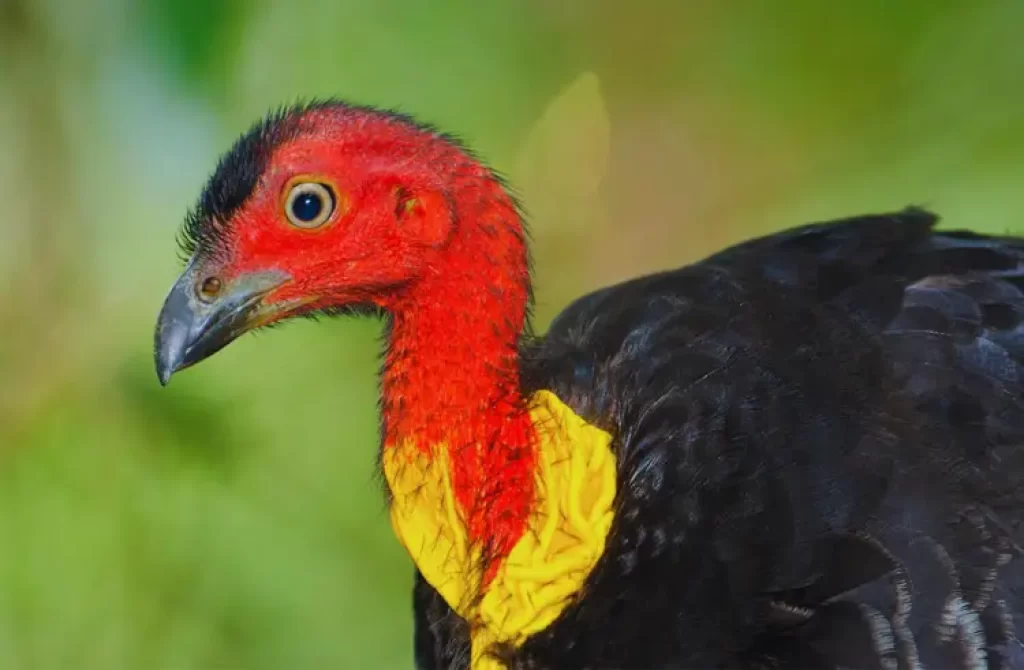
The brush turkey, also called the Australian bush turkey, is a large bird found in Australia and New Guinea. They are known for their unique nesting behavior.
Rather than building nests, brush turkeys construct large mounds made of leaves, soil, and vegetation, which generate heat through decomposition.
The female lays her eggs in the mound, and the heat naturally incubates them. Brush turkeys are primarily herbivorous, feeding on fallen fruits, seeds, insects, and vegetation. They play an essential role in seed dispersal and nutrient recycling in their habitats.
40. Bawean Deer (Axis kuhlii)
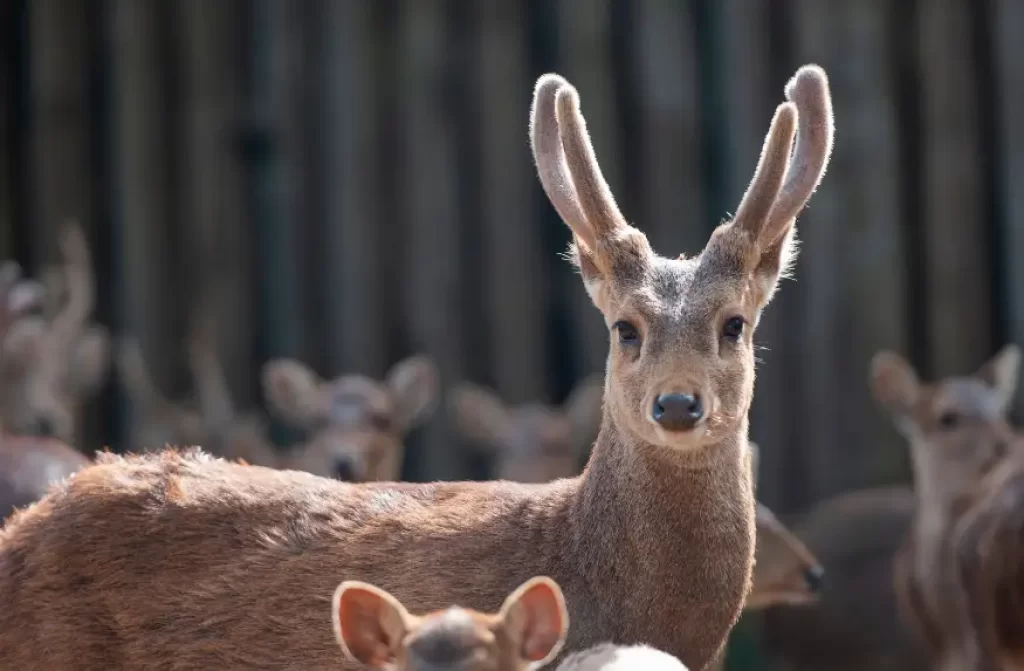
The Bawean deer, also known as the Kuhl’s deer, is a rare and endangered deer species endemic to the island of Bawean in Indonesia. It is a small deer characterized by its short antlers and reddish-brown coat.
Bawean deer are primarily found in the lowland rainforests and have adapted to the island’s specific ecological conditions. However, deforestation and hunting have drastically reduced their numbers.
Conservation initiatives focus on preserving their natural habitat, implementing strict protection measures, and raising awareness among local communities about the importance of conserving this unique deer species.
41. Bonobo (Pan paniscus)
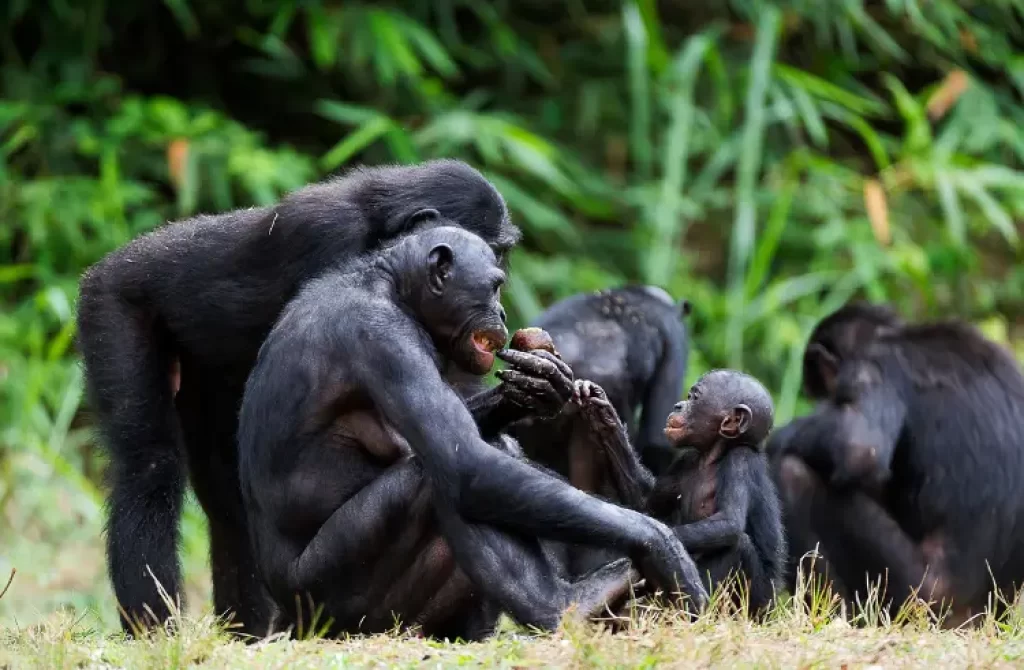
Bonobos are closely related to chimpanzees and are one of the two species of chimpanzees found in the world. They are native to the rainforests of the Democratic Republic of Congo. Bonobos are known for their peaceful and cooperative social behavior.
They live in tight-knit communities led by dominant females, and they use various vocalizations, gestures, and facial expressions to communicate. Bonobos are also known for their high level of sexual behavior, using it for social bonding and conflict resolution.
42. Bumblebee (Bombus)
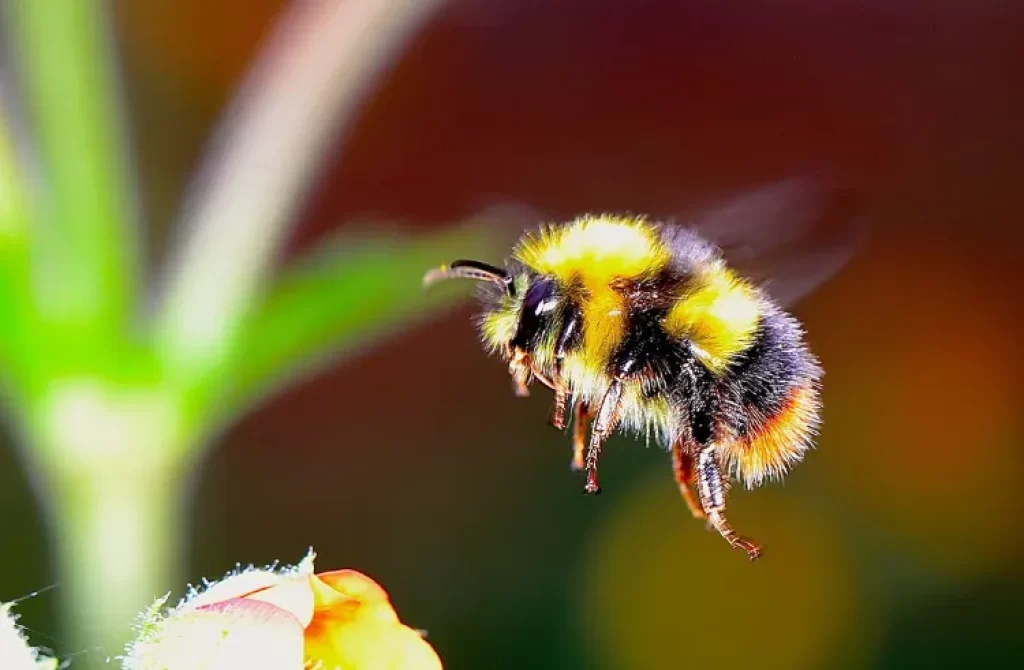
Bumblebees are large, fuzzy insects known for their important role in pollination. They are found in various parts of the world and are particularly effective pollinators due to their ability to vibrate their flight muscles, allowing them to “buzz pollinate” certain flowers. Bumblebees are social insects, forming colonies with a queen and workers.
They collect nectar and pollen from flowers to feed themselves and the colony. Bumblebees are important pollinators for many crops and wildflowers, contributing to ecosystem health and food production.
43. Bengal Tiger (Panthera tigris tigris)
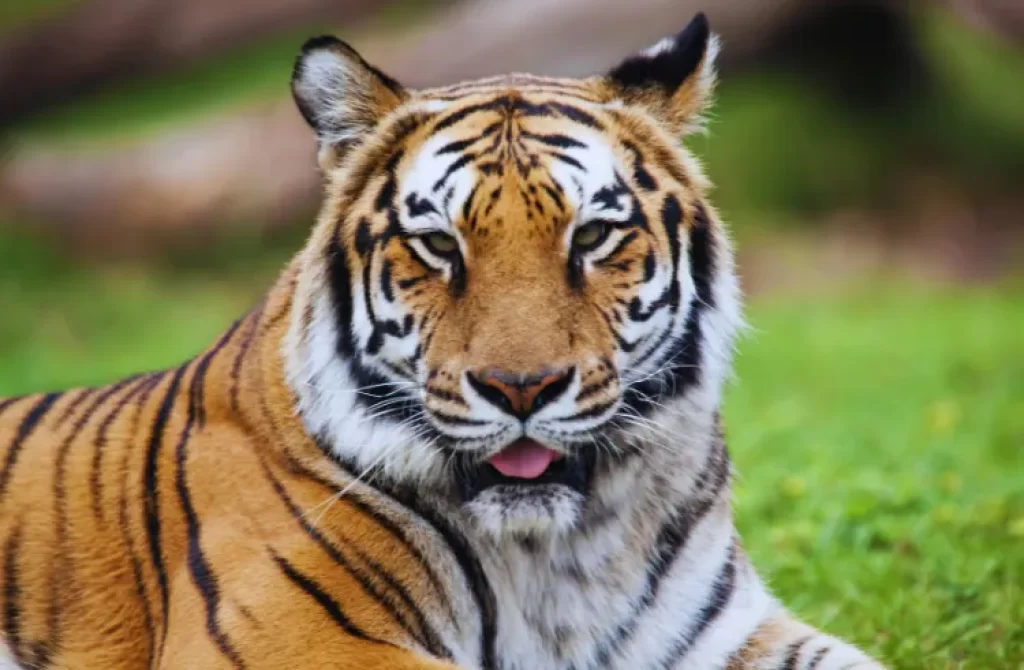
The Bengal tiger is a majestic big cat native to the Indian subcontinent. It is one of the most iconic and critically endangered species in the world. Bengal tigers have a stunning orange coat with dark stripes, which serve as camouflage in their forest habitat.
They are powerful hunters, capable of taking down large prey such as deer, wild boar, and even water buffalo. Loss of habitat and poaching have greatly impacted their populations, and conservation efforts are crucial for their survival.
44. Bay Cat (Catopuma badia)
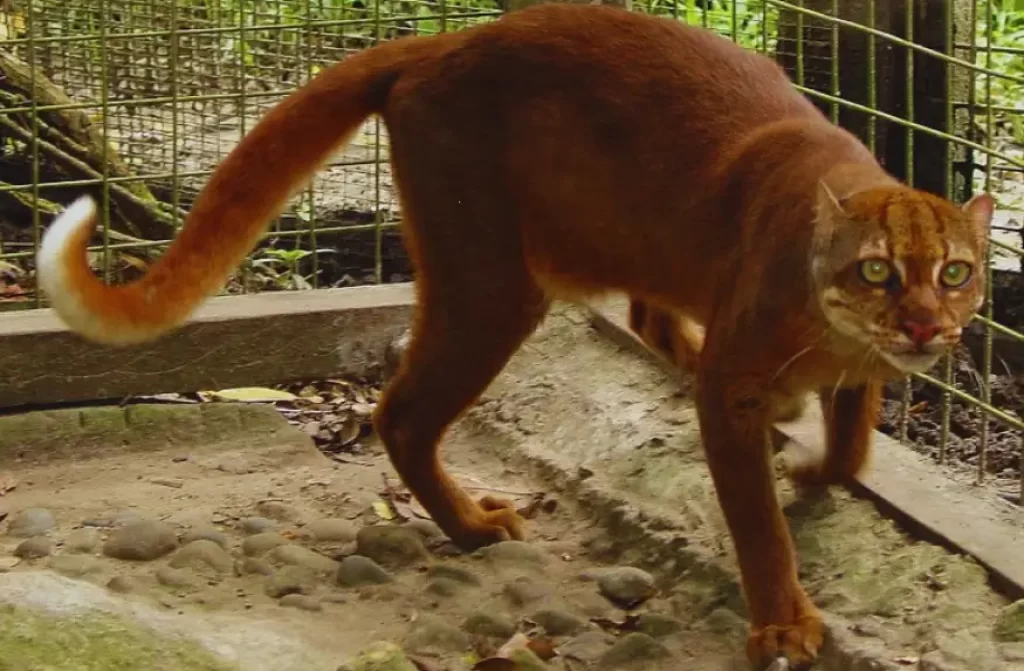
The bay cat, our final entry in the list of 45 animals that start with the letter “B,” is a captivating little wild cat found exclusively on the beautiful island of Borneo.
This unique feline sports a stunning reddish-brown coat, making it stand out from its fellow wild cat cousins in the region. But here’s the thing: the bay cat is quite the mysterious character. It’s like a secret agent of the feline world, always keeping a low profile and rarely giving us a glimpse into its world.
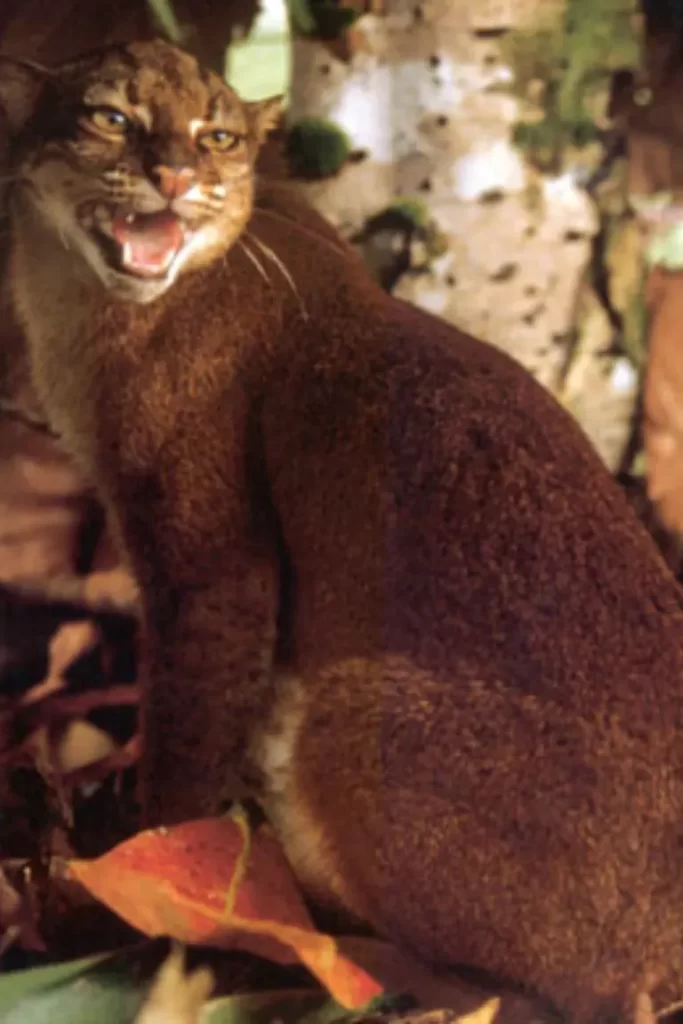
Speaking of mysteries, we have so much more to uncover about the bay cat’s behavior and its role in the ecosystem. With limited sightings and a knack for avoiding human contact, these cats have kept us scratching our heads in curiosity. We’re still piecing together the puzzle of their daily lives and how they contribute to the delicate balance of their habitat.
Sadly, the bay cat is facing some serious challenges. Imagine its lush forest home gradually disappearing as trees are cut down for farming and other human activities. It’s heartbreaking, really. The loss of their precious habitat not only disrupts their way of life but also makes it harder for these cats to find mates and raise their adorable bay cat kittens. On top of that, there’s the issue of illegal hunting, which poses a real danger to their survival.
That’s why it’s so important for us to step up and protect these little wonders. We need more research, more understanding, and more conservation efforts to give the bay cat a fighting chance.
Conclusion
Alright, folks, that wraps up our compilation of 45 animals that start with the letter B. If you’re an animal enthusiast craving more fascinating insights, be sure to explore our other articles.
We’ve got a treasure trove of reliable information waiting for you! Discover intriguing details about various species, their behaviors, habitats, and much more. Expand your knowledge and indulge in the wonders of the animal kingdom with our extensive resources. Happy exploring!


